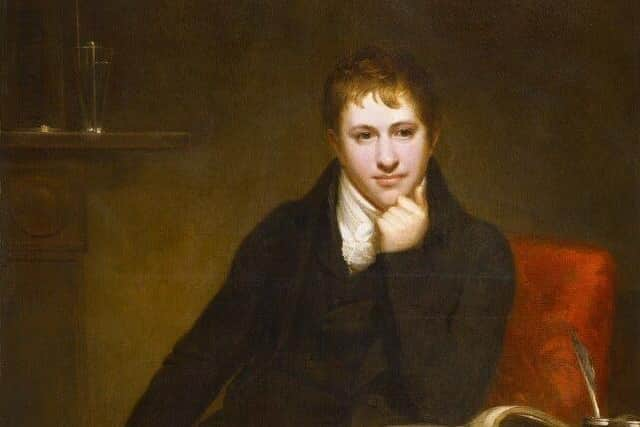Lancaster researchers discover hundreds of unpublished poems written by 19th Century chemist Sir Humphry Davy
and live on Freeview channel 276
Much of the secretly written poetry, scribed in the same notebooks Sir Humphry Davy used to record his groundbreaking experiments, finds and revelations, has not been read since he wrote it, and reveals some fascinating links between his poems and his scientific breakthroughs.
Over the past four years, nearly 3,500 volunteers from around the world have been involved in transcribing the notebooks of one of the most famous British chemists of our times, Sir Humphry Davy (1778-1827).
Advertisement
Hide AdAdvertisement
Hide AdVolunteers working on the Davy Notebooks Project have transcribed 11,417 pages from 129 bound and unbound notebooks, revealing how he reached some of his most important scientific discoveries.


Davy is best known for his miners’ safety lamp, which became known as the ‘Davy lamp’ and which saved the lives of countless miners.
He also isolated the largest number of chemical elements than any other scientist has – before or since – including potassium, sodium and magnesium.
The notebooks bear firsthand witness to these episodes.
Researchers say it was a thrill to transcribe the page on which Davy first notes his isolation of potassium and sodium, the discoveries that made his name.
Advertisement
Hide AdAdvertisement
Hide AdAnd they know that on this day Davy ‘actually danced about the room in ecstatic delight’ when he realised what he had done.
The notebook reveals Davy’s creative process, as he starts to understand what he has achieved, and his trial of different words for these new elements, such as ‘potarchium’ before he settled on ‘potassium’.
Prof Sharon Ruston, who led the project, said: “Transcribing the notebooks also reveals just how important writing poetry was to Davy.
“The notebooks contain hundreds of poems written throughout his whole life, sometimes clearly written while in his laboratory at work on scientific experiments.
Advertisement
Hide AdAdvertisement
Hide Ad“The vast majority of these poems have never been read by anyone.”
The notebooks often feature moments where the authentic, private feelings of a celebrated public figure are seen.
Davy was also the first person to inhale nitrous oxide, eventually a much-needed anaesthetic, but which has recently become more widely known as a recreational drug – the possession of which was made a criminal offence very recently on November 8, 2023.